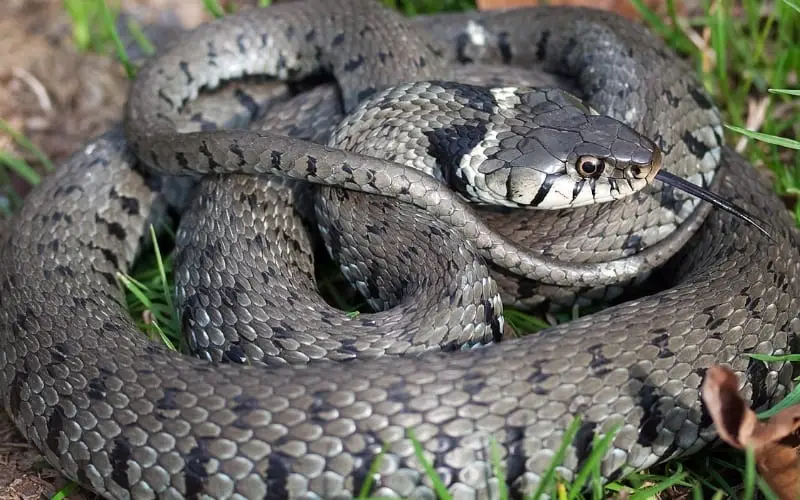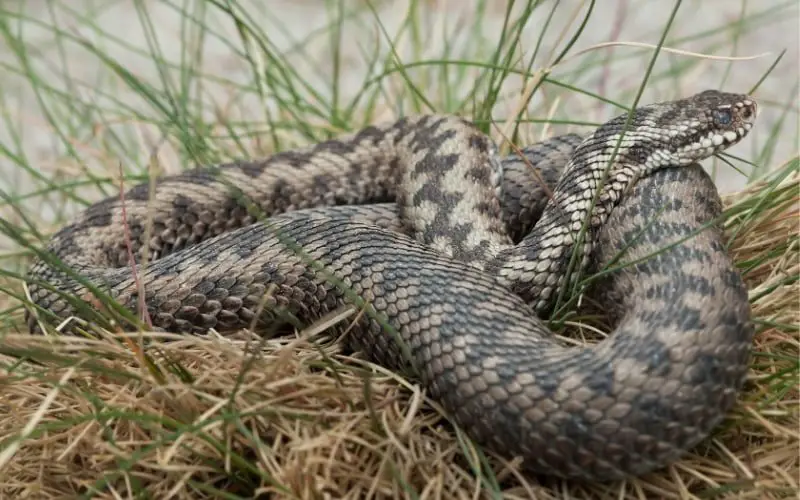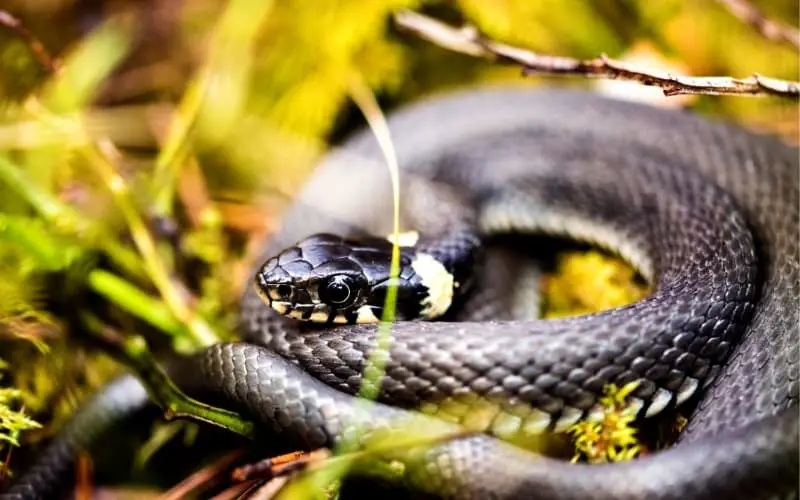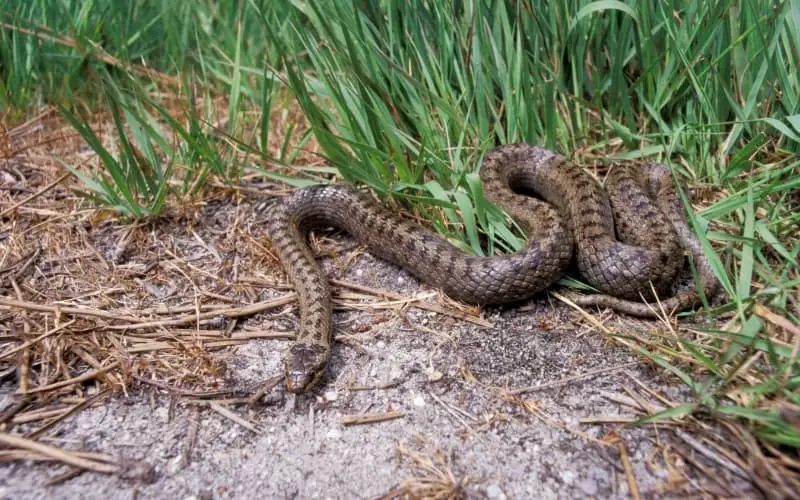

We all know that snakes are a true nightmare for many people. They don’t want to even think about finding one, and some people don’t even dare to visit a country known to have snakes. This, of course, doesn’t leave many countries left as an option. But what about the Netherlands, “are there snakes in the Netherlands?”
There are three types of snakes to be found in the Netherlands: the viper, grass snake, and smooth snake. The chance of encountering a snake in the Netherlands is not very large. The smooth snake is the rarest, and only the viper is venomous. The chance of being bitten by a viper is very small.
Are you afraid of snakes, and do you no longer dare to go on holiday to the Netherlands after reading this short answer? Be sure to first read this entire article, because you’ll most likely think very differently about this at the end of it.
To find an immediate answer to this question, yes, snakes do live in the Netherlands. But, as mentioned earlier, there is a slim chance you’ll actually encounter a snake in the Netherlands. In fact, most Dutch people never have encountered one in their own country.
In the Netherlands, there are three types of snakes, the viper, grass snake, and smooth snake. These snake species differ quite from each other and have their own habitat and way of life. Only one of these three snakes is venomous to people, but I’ll tell you more about that later.
Now that you know that there are snakes living in the Netherlands, you are obviously curious about what these snakes are, how they live, where they live, and, most importantly for many people, whether they’re dangerous.
So, do continue reading on to find out more about the snakes that live in the Netherlands.
As mentioned before, there are three types of snakes living in the Netherlands. Read about the types of snakes and how you can recognize them below.

Of the three types of snakes living in the Netherlands, the viper is the only venomous snake. It’s also the smallest snake of the three, reaching up to 65 centimeters in length (2.1 ft).
A male viper is gray in color, while a female is brown. You can recognize a viper by the zigzag pattern on its back. The viper also has thin vertical pupils, which makes it easily recognizable.
A viper ranks high in the food chain and mainly hunts for mice, small birds, lizards, and rabbits. When a viper spots prey, it bites it and releases venom into the prey. If the prey is large, the viper will let go and follow its prey by its scent. Eventually, the animal will die from the venom, and the viper will swallow its prey as a whole.
Despite the viper ranking high in the food chain, it doesn’t mean that they don’t have their own enemies. vipers need to watch out for birds of prey as they hunt for snakes.

The grass snake is the largest snake inhabiting the Netherlands and can reach a length of up to 1.30 meters (4.2 ft.). Of the three types of snakes in the Netherlands, you are most likely to encounter a grass snake, as it lives around waters and sometimes ends up in inhabited areas and has been found every now and then in cities.
As the Dutch name suggests (ring slang), the grass snake can be recognized by the colorful rings around its neck, which are yellow and black and are located just behind its head. In contrast to the viper, the grass snake has round pupils and keeled scales.
You don’t have to be afraid of the grass snake, as it rarely bites and will try to flee when it senses danger. When fleeing is no longer an option, the grass snake pretends to be dead. It’ll lie on his back, turn his pupils away and hold its mouth open with his tongue sticking out.
As a last resort, the grass snake has another trick up its sleeve. It releases an extremely smelly liquid in hopes of its attacker letting go.

The smooth snake is the rarest of the three snakes in the Netherlands. The smooth snake grows up to 70 centimeters (2.2 ft.) in length and is absolutely not dangerous.
You can recognize the smooth snake by its gray-brown color and dark spots on its back. On top of its head, there is a brown spot, which looks a bit like a crown. The smooth snake's eyes are yellow and have round pupils.
The smooth snake gets its name from the way the scales merge. The viper and grass snake both have a small ridge between their scales, but the scales of the smooth snake merge into each other without a ridge, making it appear very smooth.
Since the smooth snake is not dangerous and not aggressive, it does everything it can to avoid being detected. When danger threatens, the smooth snake likes to hide underneath leaves or between plants. Due to its good camouflage color, it blends in with the environment.
Now that you know what kind of snakes can be found in the Netherlands and how you can recognize them, you’d naturally also want to know in which part of the Netherlands they can be encountered.
Below you’ll find information about the habitat of the viper, grass snake, and smooth snake.
Vipers in the Netherlands mainly occur on high sandy soils (except for the dunes). They feel most comfortable in areas where heathlands or forest areas border open sandy plains. The possibility of having good shelter is very important to the viper.
The largest populations can be found in Drenthe, Friesland, and the Veluwe. They also live in Overijssel, Gelderland, and Limburg, although the population is smaller there.
During spring, you’ll see more vipers on the open plains when they warm themselves up in the sun. In the summer months, they move towards the more humid and sheltered areas, where more food can be found.
During the summer months, the viper is very difficult to find, as they’re then in between the vegetation. In addition, they’re very shy and prefer to hide rather than confront someone.
The grass snake's habitat is always close to water. It can swim well and likes to eat amphibians such as frogs and salamanders. Grass snakes prefer to live in areas where sandy soils merge into peat and clay soils.
If you’re very quiet and careful, you can see grass snakes lying in the sun on hills or dikes near the water. Watch out when looking for grass snakes because as soon as they hear you, they’ll try to hide.
The area where the most important grass snake populations are located is above the major rivers in the Netherlands. In the provinces around the Ijsselmeer, in North Holland, Utrecht, Gelderland, Overijssel, Drenthe, and Friesland, you have the best chance to encounter a grass snake.
In recent years, it has also become more common to see grass snakes near large cities. These are cities with a lot of water surrounding them, for example, a city like Amsterdam. In this city, the number of grass snakes has increased enormously, partly because more is being invested in nesting locations for grass snakes.
However, you will not easily encounter a grass snake in the center of Amsterdam, but rather in the suburbs that border the habitat of the grass snake.
If you ever find yourself face to face with a grass snake, you don't have to worry at all. The grass snake isn’t aggressive and won’t bite; the only thing it’ll do is find a safe place as quickly as possible.
A confrontation with the smooth snake in the Netherlands won’t often happen, as it’s the rarest snake in our country. The smooth snake is also very shy and always tries to avoid detection.
The smooth snake prefers to live in open forests, heathlands, and sandy soil areas. The biggest chance you’ll have of encountering a specimen in the Netherlands is on the Veluwe, in Drenthe and Friesland, and in a few places in Noord-Brabant, Limburg, and Overijssel.
Despite the smooth snake being active during the day and hunting for lizards, rodents, and other snakes, the chance of seeing one is very slim. As soon as they hear danger, they’ll hide underneath stones, leaves, or between tree stumps.
As I’ve mentioned earlier in this blog, only one of the three snake types in the Netherlands is venomous, which is the viper.
Fortunately, though, the chance that you’ll encounter a viper is very small, as they are quite shy. In addition, a viper isn’t aggressive and will prefer to flee or hide when possible. A viper will only bite when it’s in danger, but for this, you’d need to get really close.
Between 1973 and 2005, only 83 viper bites were recorded in the Netherlands, of which none were fatal. These figures show that the chance of being bitten is very small.
If a viper does bite, however, it can be very painful and cause nausea, fainting, and painful swelling of the bitten body part. The physical response to a viper bite can vary from person to person and should be taken very seriously. Although there have been few cases in the distant past, people have died from a viper bite.
In the future, it can, of course, happen that a viper bites you or someone close to you. Therefore, there are some important things mentioned below that are important to keep in mind when this happens. Please read them carefully and try to remember them as best you can.
After a viper bite, an antiserum is only administered when this is really necessary. It’s advisable to ask for a tetanus shot because of the many bacteria in the mouth and on the teeth of a snake.
Luckily the chances of being bitten by a viper are so slim that most of us will never experience it. But should you ever experience it, remember the steps above!
Learn more about animals in the Netherlands!
If you want to know what other animals live in the Netherlands, please read our article on that subject. Or what about other wildlife, such as wolves in the Netherlands?
By reading this article, I hope to have given a good answer to the question, “Are there snakes in the Netherlands?”. I also hope to have convinced you that you can just come to the Netherlands on holiday, even if you’re afraid of snakes.
The chance of encountering a snake in the Netherlands is very small, and luckily no other snakes, like pythons or cobras, live in the Netherlands. So, wait no longer and book a holiday to the beautiful Netherlands now!